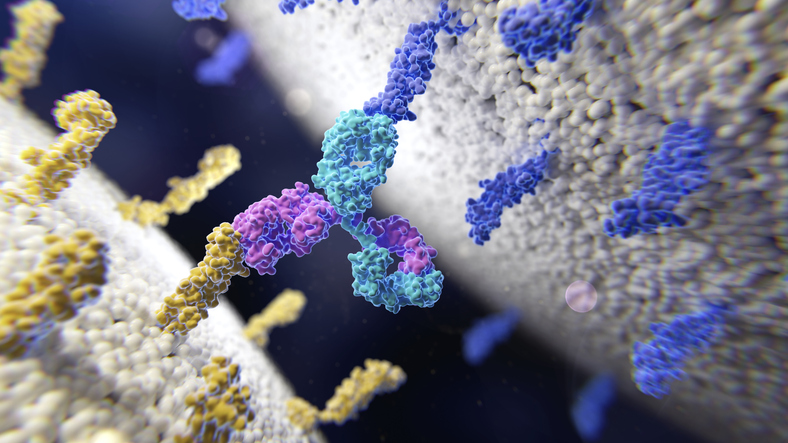A custom antibody manufacturer is testing the best combination of molecular parts for bispecific manufacturing. According to Stefan Schmidt, PhD, CEO of Evitria, the company offers to test in parallel different bispecific designs to help its customers choose the one that is best performing.
“The big issue with bispecific manufacturing is getting rid of product-related impurities, and this often has to do with mispairing of heavy chains,” he explained. “What we’re doing is comparing different ways to design bispecifics.”
Bispecific antibodies (bsAbs) offer advantages over monoclonal antibody (mAb) drugs by being a hybrid of two antibodies, each with a different binding site, leading to two different mechanisms of action. However, this means they have two different light and two heavy chains, which often mispair during molecular assembly, leading to the wrong molecules (homodimers) and low manufacturing yields.
To help reduce this problem, Evitria says they’ve licensed Lonza’s bYlok® technology to improve light chain pairing. The starting point involves antibodies with a “knob” or a “hole” in the heavy chains, so-called “knobs-into-holes” technology, to help improve correct bonding between parts of the bispecific, Schmidt explained.
“What you have are two variations, bYlok and non-loked, and another two combinations where one chain has a hole formation and the other a knob formation and vice versa,” he says. “And you can express these four combinations to see the impact of the expression level, the yields, heterodimer formation, and purity.”
By doing this early screening, he adds, it’s possible for customers to speed up their process development and move to commercial bsAb manufacturing.
“We support our customers in finding the best configuration of their molecule of interest. Then there are fewer impurities from the start and that leads to faster process development,” explained Schmidt. “By doing this screening between early and process development, we’re helping them find the best configuration of a molecule to go to the clinic.”
